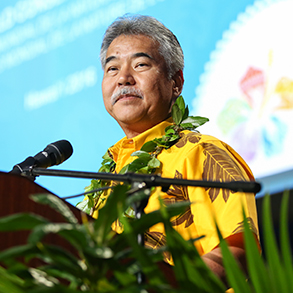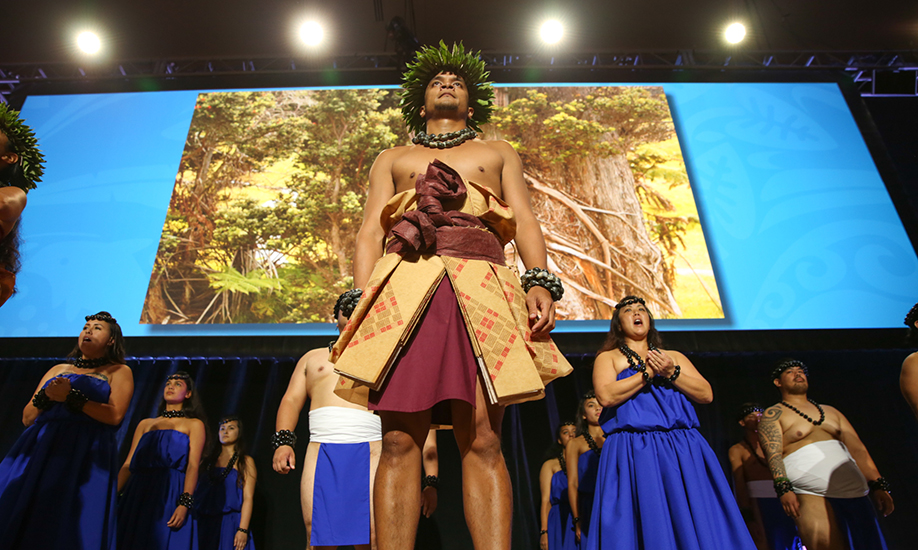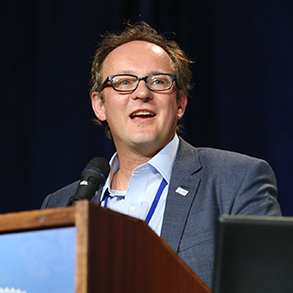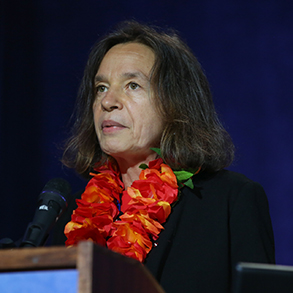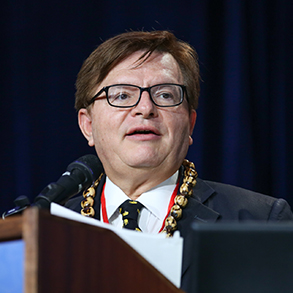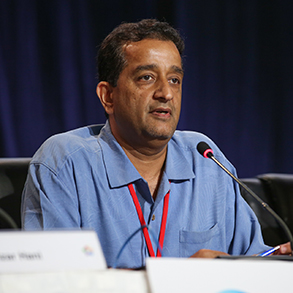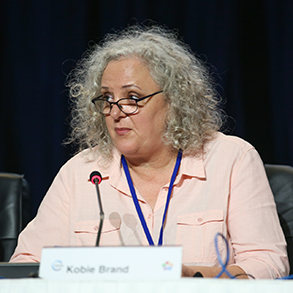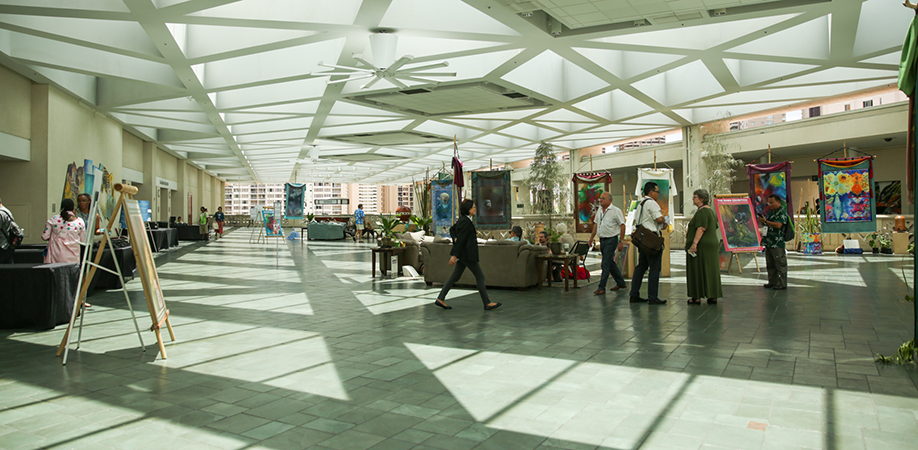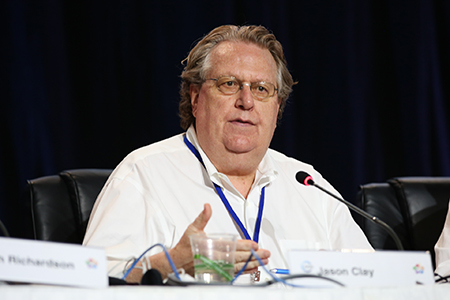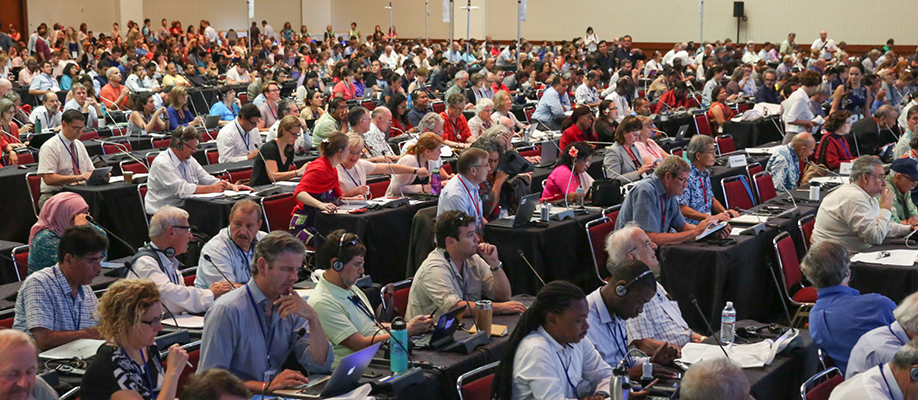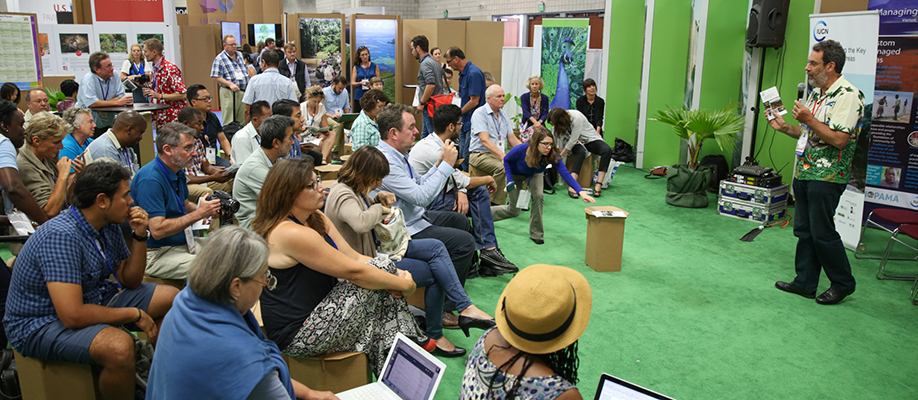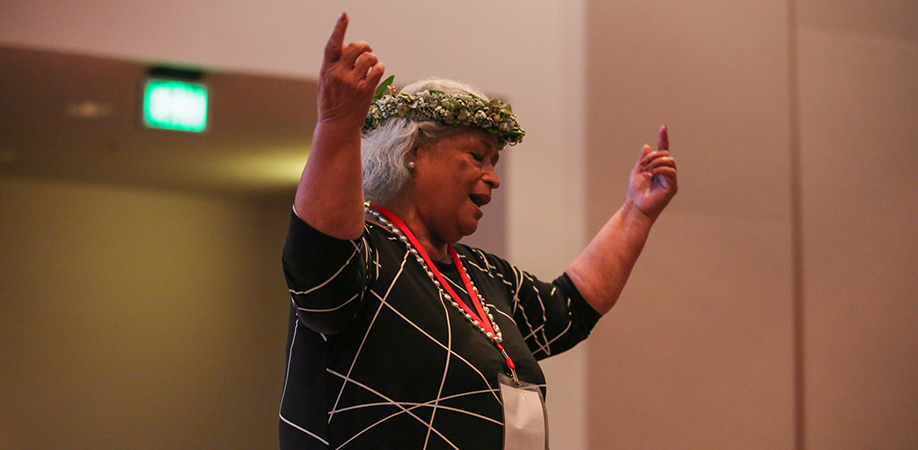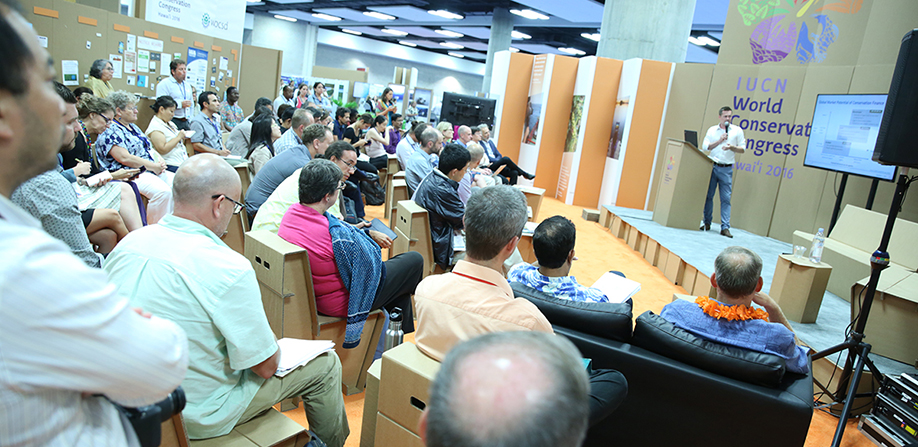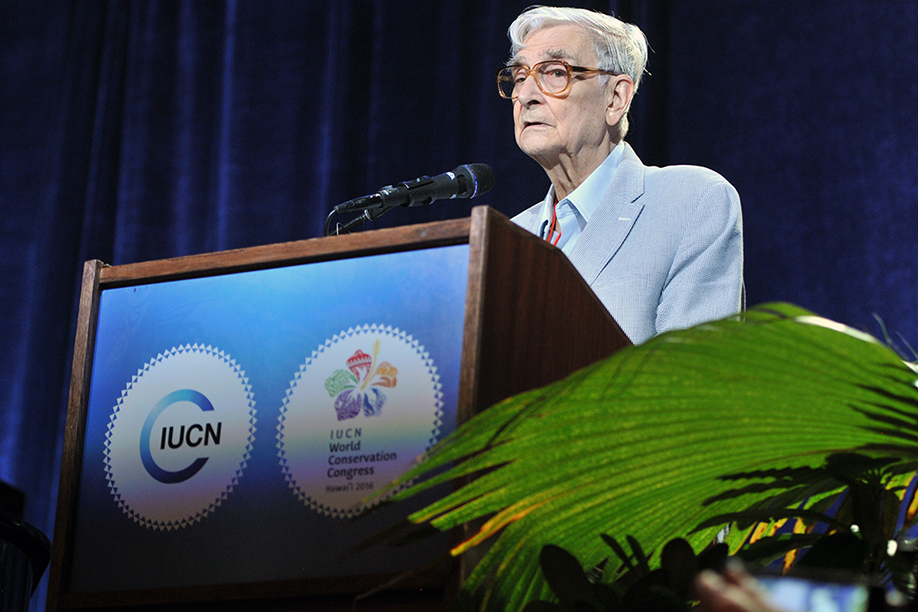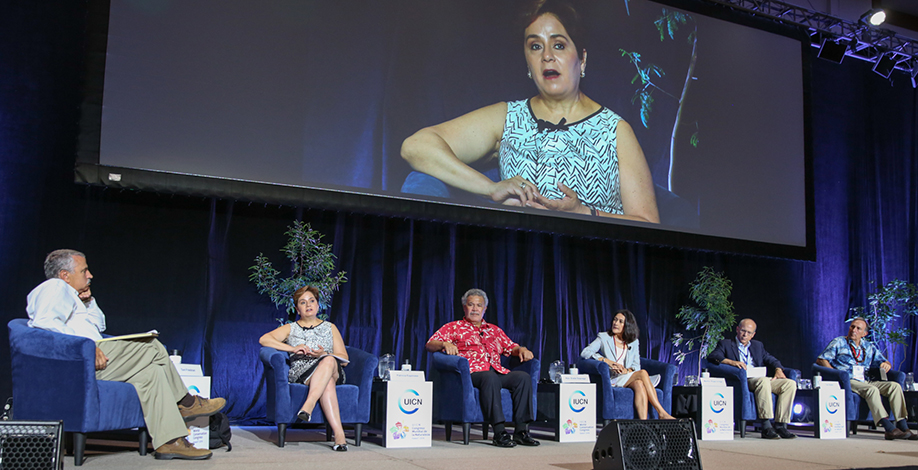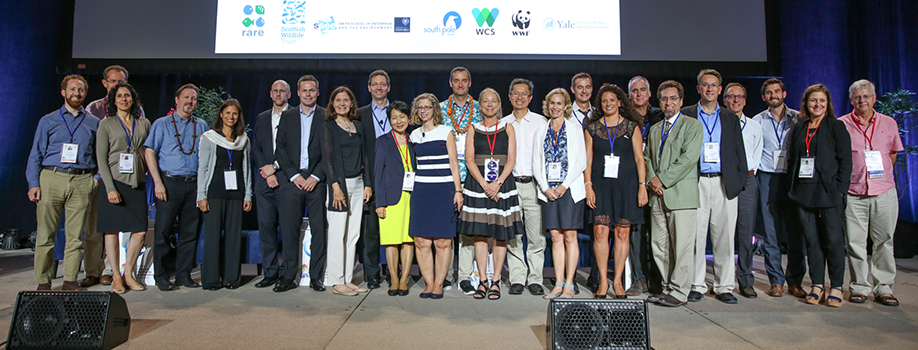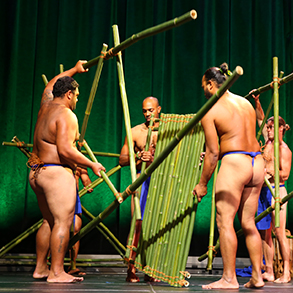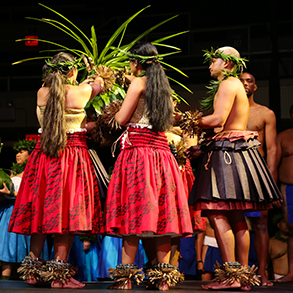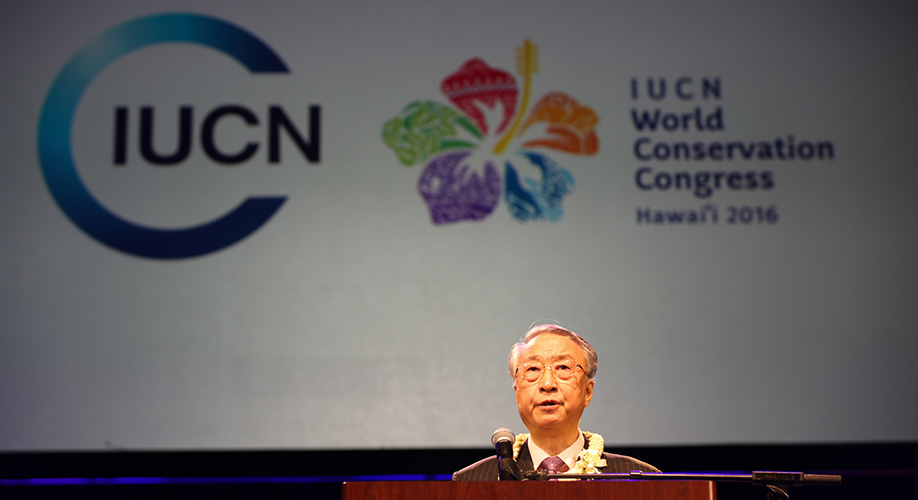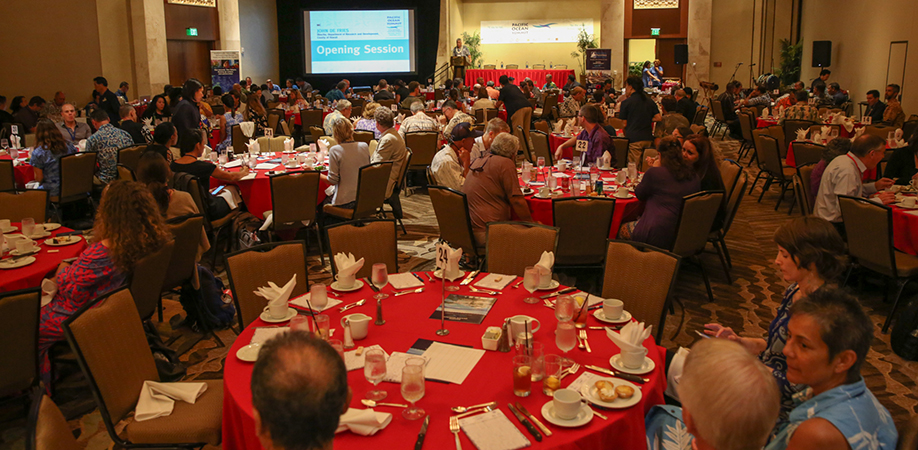2016 International Union for Conservation of Nature (IUCN) World Conservation Congress
Planet at the Crossroads
1-10 September 2016 | Honolulu, US
Summary Highlights, 1-10 September 2016
Download ENB+ Meeting Reports |
||||||||||||||||||||||||||||||||||||||||||
|
||||||||||||||||||||||||||||||||||||||||||

| Follow @iisdrs | ||

Loading... |
||
|
Receive emailed updates with the news articles above plus related information and announcements from our NATURAL RESOURCES community mailing lists: |
||
Highlights for Saturday, 10 September 2016
|
|
||
|
IISD Reporting Services, through its ENB+ Meeting Coverage, has produced daily reports, daily web coverage, summary videos from the Forum and the Members Assembly, as well as a summary report from the IUCN Congress 2016, which is available in HTML and PDF format. + Visit the web coverage for Saturday, 10 September 2016 | ||
|
|
|
|
|
Highlights for Friday, 9 September 2016
|
|
||
|
+ Download the daily report for Friday, 9 September 2016, in English (in HTML or PDF format), French (in HTML or PDF format), or Spanish (in HTML or PDF format) | ||
|
|
|
|
|
Highlights for Wednesday, 7 September 2016
|
|
||
|
+ Download the daily report for Wednesday, 7 September 2016, in English (in HTML or PDF format), French (in HTML or PDF format), or Spanish (in HTML or PDF format) | ||
|
|
|
|
|
Highlights for Tuesday, 6 September 2016
|
|
||
|
+ Download the daily report for Tuesday, 6 September 2016, in English (in HTML or PDF format), French (in HTML or PDF format), or Spanish (in HTML or PDF format) | ||
Members' Assembly: Morning Session
|
|
|
|
Highlights for Monday, 5 September 2016
|
|
||
|
+ Download the daily report for Monday, 5 September 2016, in English (in HTML or PDF format), French (in HTML or PDF format), or Spanish (in HTML or PDF format) | ||
|
|
|
|
Highlights for Sunday, 4 September 2016
|
On Sunday, participants attended the Forum for the third day, engaging with a variety of conservation issues, including an update on the IUCN’s Red List, managing ecosystems to reduce risks to disasters, managing conflicts between business and civil society over the use of natural resources, discovering the ways in which indigenous values and health indicators are helping management of invasive species, and finding nature-based solutions for sustainable development. In the afternoon, during a high-level event on actions required for a sustainable ocean, two panels discussed potential ways to address management of oceans, such as legislation, research and monitoring, and combatting pollution and illegal fishing. Other afternoon events included a launch of guidelines on climate change best practices, the place of the law in the future of conservation, how to manage transboundary ecosystems through experiences in “hydro-diplomacy” and governance of shared waters, and ways of transforming Africa’s development through Chinese investments. In the evening participants attended events on gender-responsive financing for the global environment and the IUCN Green List that aims to raise the standard for new generation of protected and conserved areas. |
||
|
+ Download the daily report for Sunday, 4 September 2016, in English (in HTML or PDF format), French (in HTML or PDF format), or Spanish (in HTML or PDF format) | ||
|
|
|
|
Highlights for Saturday, 3 September 2016
|
On Saturday, participants attended the second day of the Forum, during which they continued to explore solutions to some of the planet’s most pressing conservation and sustainability challenges. High-level events convened on empowering next generations, with panelists sharing new approaches to conservation of nature and integrated approaches to empowerment. In another high-level event, panelists addressed ending wildlife trafficking with perspectives from government as well as solutions from the private sector, civil society NGOs and CITES. Throughout the day, participants explored: achieving the conservation imperative for sustainable development; engaging Pacific youth as future environmental and cultural leaders; making pledges towards achieving the Bonn Challenge; incorporating climate adaptation into agency-level planning in the Pacific islands region; and the importance of gender equality for SDG implementation and conservation projects. In other events, panelists discussed: Key Biodiversity Areas (KBA); the Western Gray Whale Advisory Panel (WGWAP); effective Ecosystem-based Adaptation (EBA); new Bonn Challenge pledges; and solutions for a crowded planet in global commons. During the Heritage Heroes awards, Bibhuti Lahkar was announced as the winner for presented his work on the Manas Tiger Reserve and his efforts in the area of capacity building for local youth, NGOs, and ex-poachers. |
||
|
+ Download the daily report for Saturday, 3 September 2016, in English (in HTML or PDF format), French (in HTML or PDF format), or Spanish (in HTML or PDF format) | ||
|
|
|
|
Highlights for Friday, 2 September 2016
|
On Friday, the second day of the IUCN WCC, participants attended the first day of the Forum, during which they focused on exploring solutions to some of the planet’s most pressing conservation and sustainability challenges. During the opening ceremony, Prince Charles, via video, shared a Hawaiian proverb, “Pupukahi i holomua – we must unite to move forward.” Inger Andersen, IUCN Director General, said the IUCN’s role is to raise awareness about the planet being at a crossroads. Tom Friedman, the New York Times, highlighted that “later is officially over, we can remove it from the dictionary as later will now be too late.” Brooke Runnette, National Geographic Society, shared efforts to empower people and create a community of change. Hong Youngpyo, Republic of Korea, reviewed progress since the 2012 WCC, saying that “we can choose a path of co-existence or no existence at all.” In a high-level event on championing nature-based solutions, panelists discussed economic and security risks posed by climate change, the valuable role of ecosystems and biodiversity to combat climate change, and other co-benefits of protecting nature and empowering women. In another high-level event on leveraging private sector finance for public good, Naoko Ishii, the GEF CEO and Chairperson, said “the way to transform the economic system is to change the way the private sector sees the value of nature.” Events continued into the evening, when IUCN and the UN Environment Programme World Conservation Monitoring Centre (UNEP-WCMC) launched “Protected Planet Report 2016.” |
||
|
+ Download the daily report for Friday, 2 September 2016, in English (in HTML or PDF format), French (in HTML or PDF format), or Spanish (in HTML or PDF format) | ||
|
|
|
|
Highlights for Thursday, 1 September 2016
|
On Friday, the second day of the IUCN WCC, participants attended the first day of the Forum, during which they focused on exploring solutions to some of the planet’s most pressing conservation and sustainability challenges. During the opening ceremony, Prince Charles, via video, shared a Hawaiian proverb, “Pupukahi i holomua – we must unite to move forward.” Inger Andersen, IUCN Director General, said the IUCN’s role is to raise awareness about the planet being at a crossroads. Tom Friedman, the New York Times, highlighted that “later is officially over, we can remove it from the dictionary as later will now be too late.” Brooke Runnette, National Geographic Society, shared efforts to empower people and create a community of change. Hong Youngpyo, Republic of Korea, reviewed progress since the 2012 WCC, saying that “we can choose a path of co-existence or no existence at all.” In a high-level event on championing nature-based solutions, panelists discussed economic and security risks posed by climate change, the valuable role of ecosystems and biodiversity to combat climate change, and other co-benefits of protecting nature and empowering women. In another high-level event on leveraging private sector finance for public good, Naoko Ishii, the GEF CEO and Chairperson, said “the way to transform the economic system is to change the way the private sector sees the value of nature.” Events continued into the evening, when IUCN and the UN Environment Programme World Conservation Monitoring Centre (UNEP-WCMC) launched “Protected Planet Report 2016.” |
||
|
+ Download the daily report for Thusday, 1 September 2016, in English (in HTML or PDF format), French (in HTML or PDF format), or Spanish (in HTML or PDF format) | ||
|
|
|
Traditional Hawai‘ian dancers at the opening ceremony | ||
|
|
|
|
IUCN and the Ministry of Environment of the Republic of Korea



